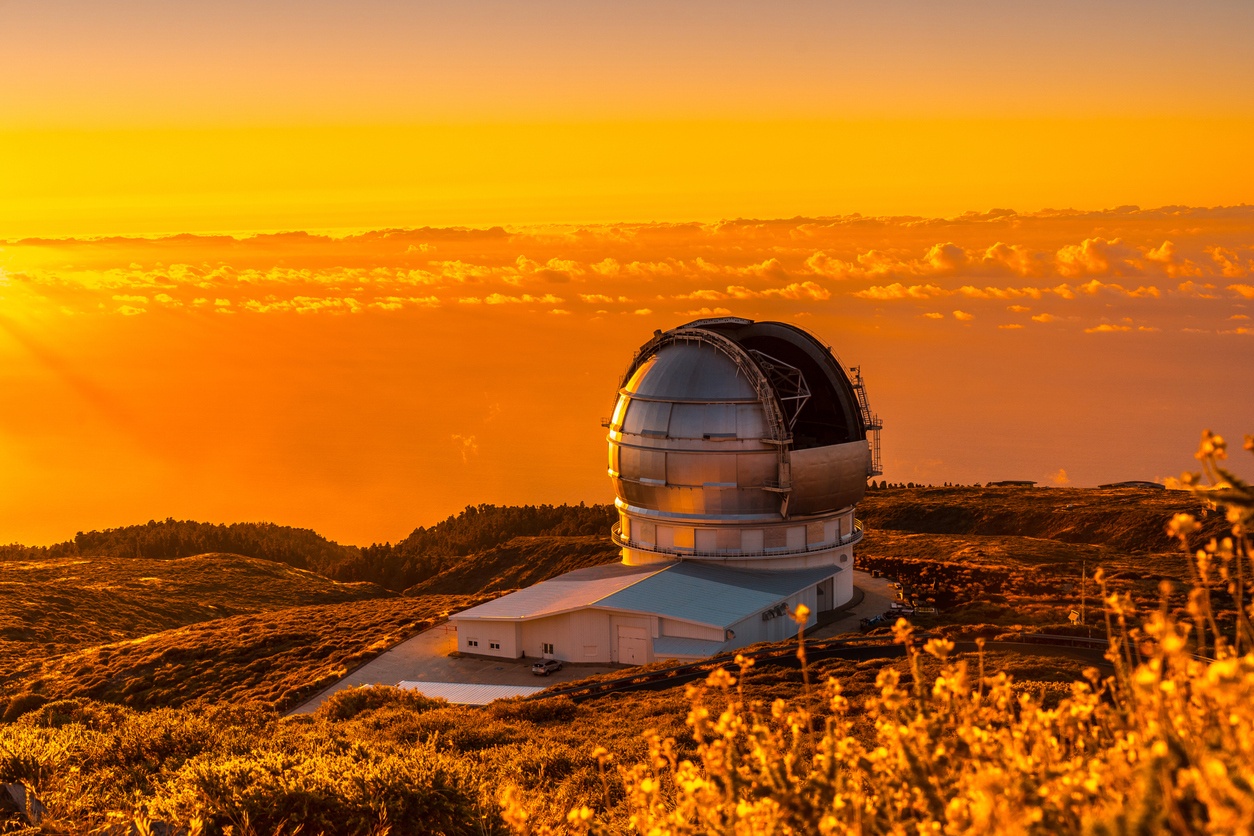
Roque de los Muchachos (Spain)
The Roque de los Muchachos observatory is an astronomical research center located on the island of La Palma, in the Canary Islands. It belongs to the Instituto de Astrofísica de Canarias and was inaugurated in 1985 by the King and Queen of Spain. It houses about twenty telescopes and instruments for observing the night sky, the sun and the universe in gamma rays. Among them is the Gran Telescopio Canarias, the largest optical and infrared telescope in the world.
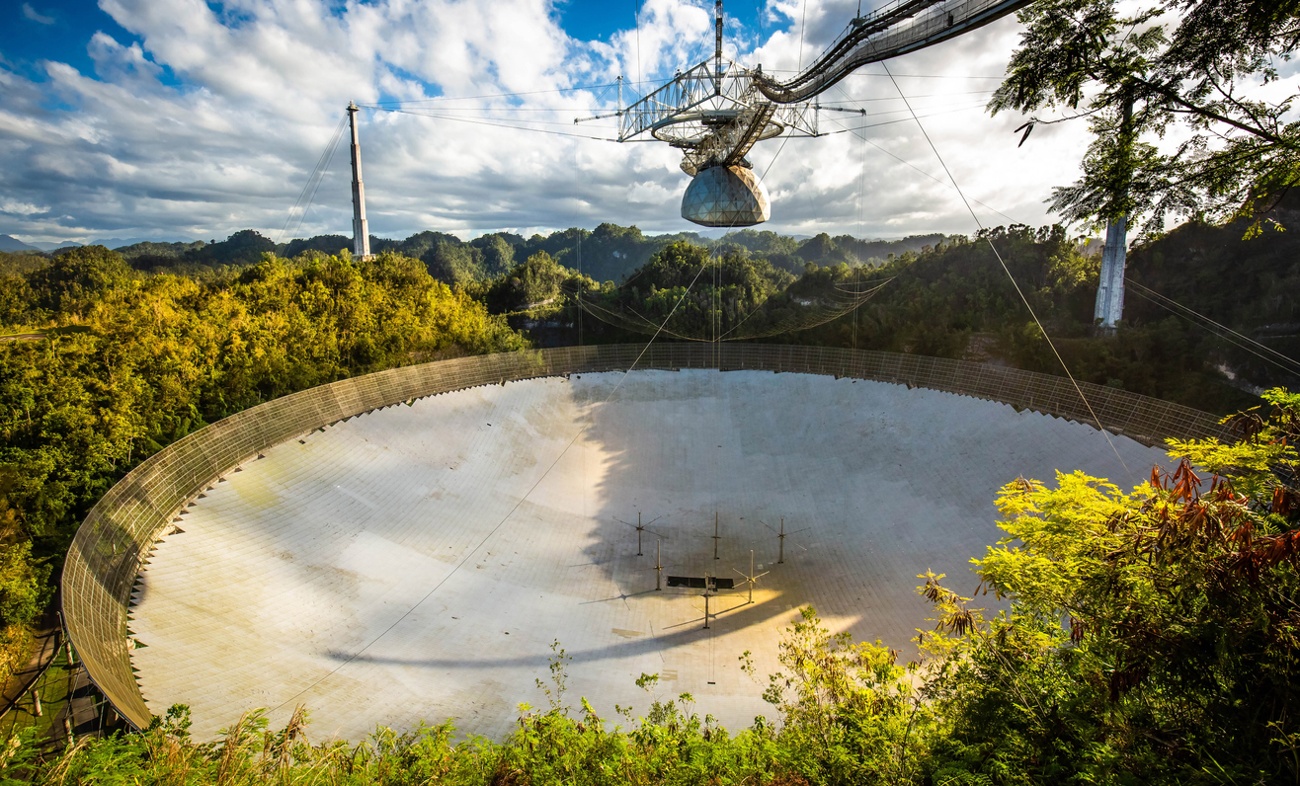
Arecibo Observatory (Puerto Rico)
The Arecibo Observatory was an astronomical research center located in Puerto Rico, owned by the U.S. National Science Foundation. Its main instrument was the world’s largest single-dish radio telescope, 305 meters in diameter, built in a natural depression. The observatory was used to study the ionosphere, planets, and the radio-frequency universe. It was also the setting for movies such as Contact and GoldenEye. Unfortunately, the observatory collapsed in December 2020 after sustaining damage to its structure.
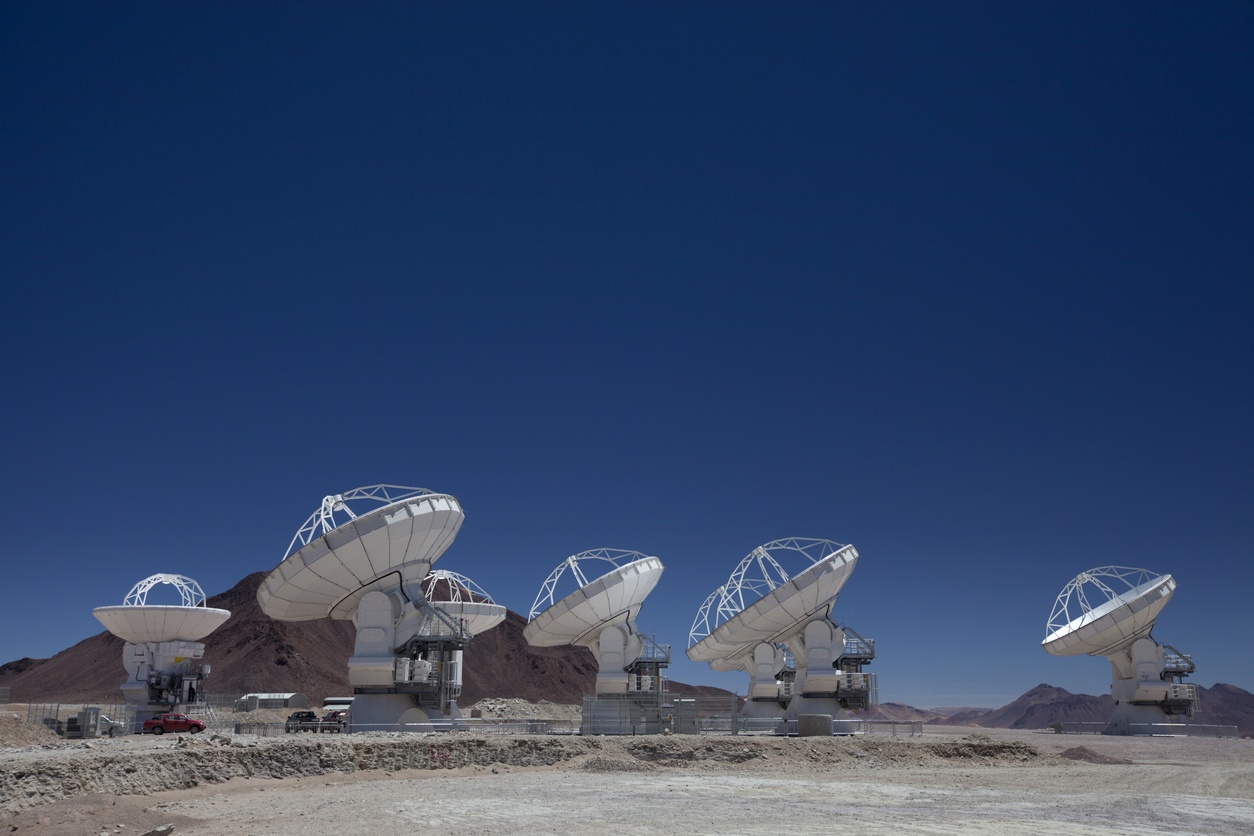
Atacama Large Millimeter Array (Chile)
The Atacama Large Millimeter Array (ALMA) is an array of 66 radio telescopes forming an astronomical interferometer in the Atacama Desert in Chile. It is the world’s largest astronomical project and an international collaboration between Europe, North America and East Asia. ALMA observes electromagnetic radiation at millimeter and submillimeter wavelengths, allowing it to study phenomena such as the formation of stars and planets, the evolution of galaxies and the supermassive black hole at the center of the Milky Way.
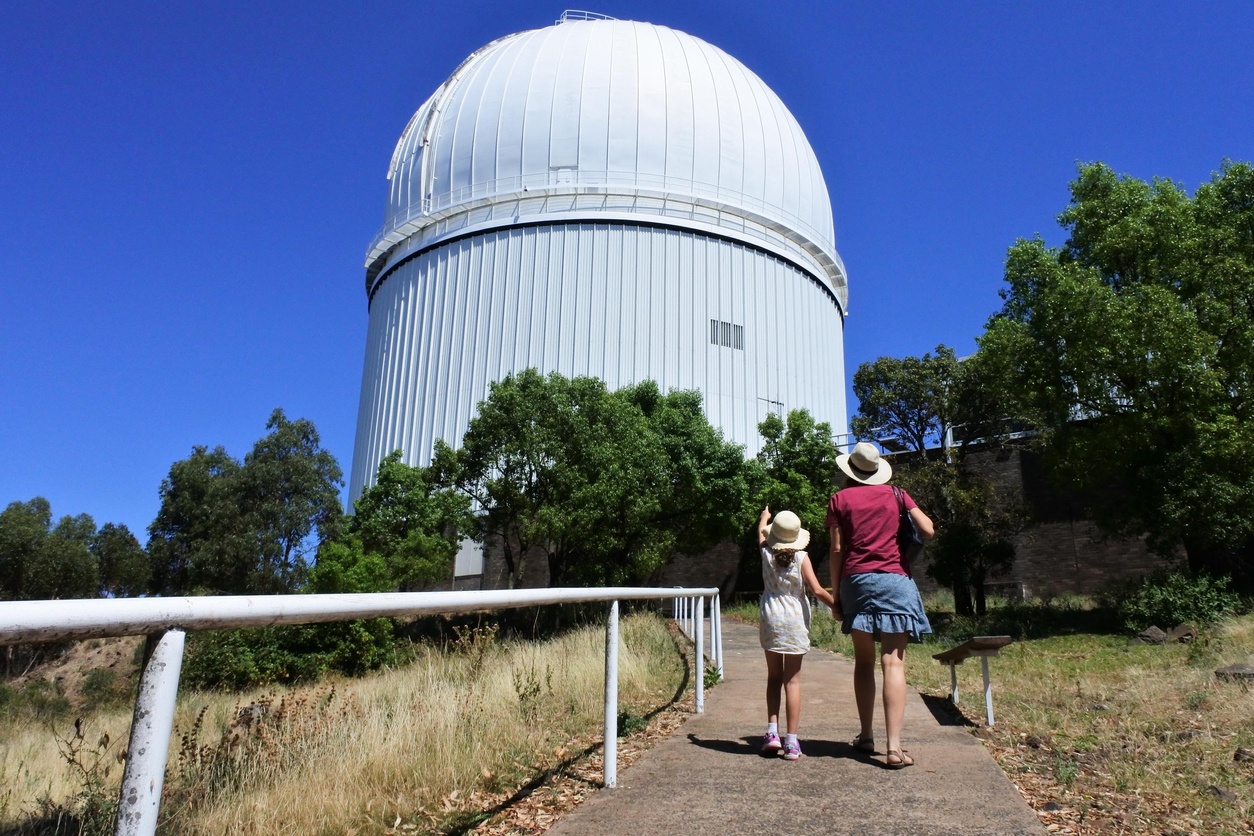
Australian Astronomical Observatory (Australia)
The Australian Astronomical Observatory (AAO) is an optical and near-infrared astronomical observatory based at North Ryde in Sydney. It was founded in 1974 as the Anglo-Australian Observatory and operated the 3.9-meter Anglo-Australian Telescope (AAT) and the 1.2-meter United Kingdom Schmidt Telescope (UKST) at the Siding Spring observatory near Coonabarabran. The AAO also performed astronomical research and designed and built instrumentation for other telescopes. In 2018, the AAO split into two entities: the Australian Astronomical Optics (AAO) and Macquarie University (MQ).
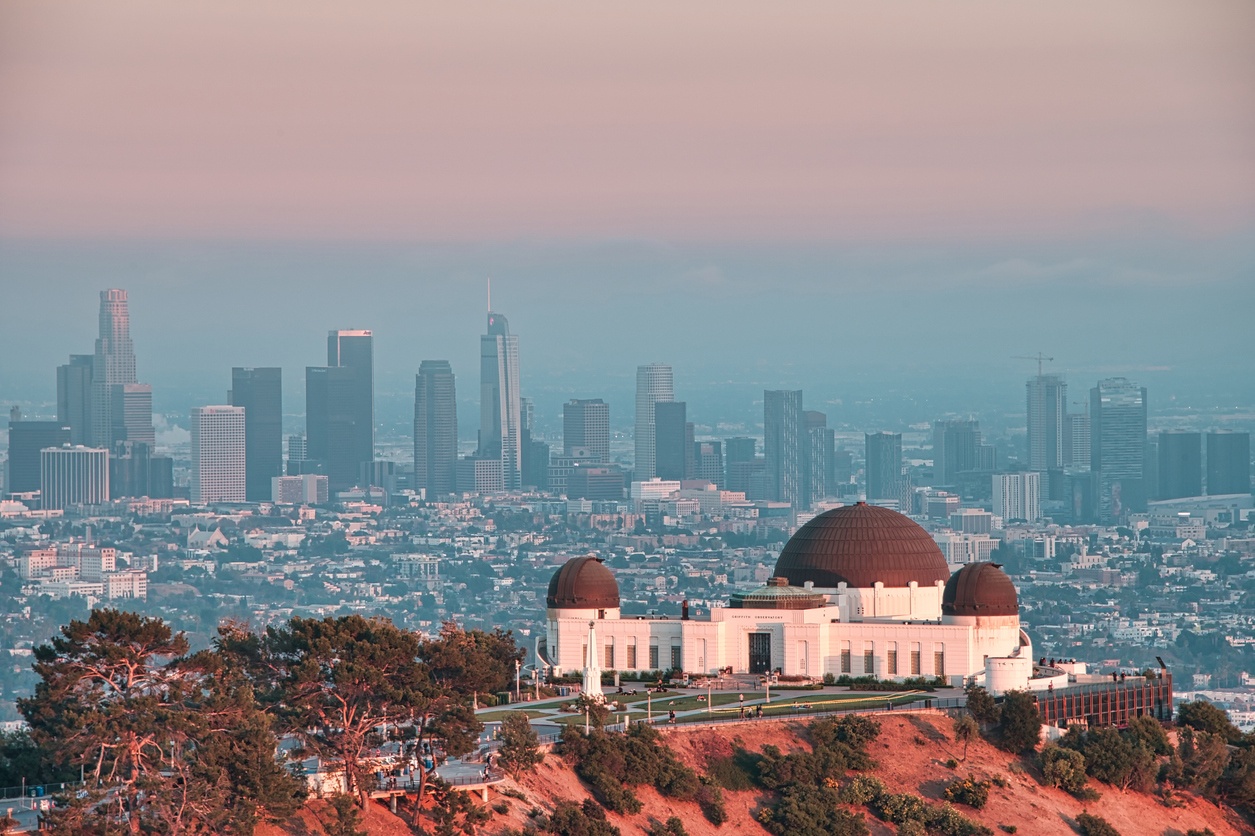
Griffith Observatory (United States)
Griffith Observatory is an optical astronomical observatory located in Los Angeles, California. It is located in Griffith Park, on the southern slope of Hollywood Mountain, and offers panoramic views of the city and the Pacific Ocean. The observatory was opened in 1935 thanks to a donation from Colonel Griffith J. Griffith and features a planetarium, an exhibition hall and a public telescope. The observatory is a symbol of Los Angeles and a popular tourist attraction.
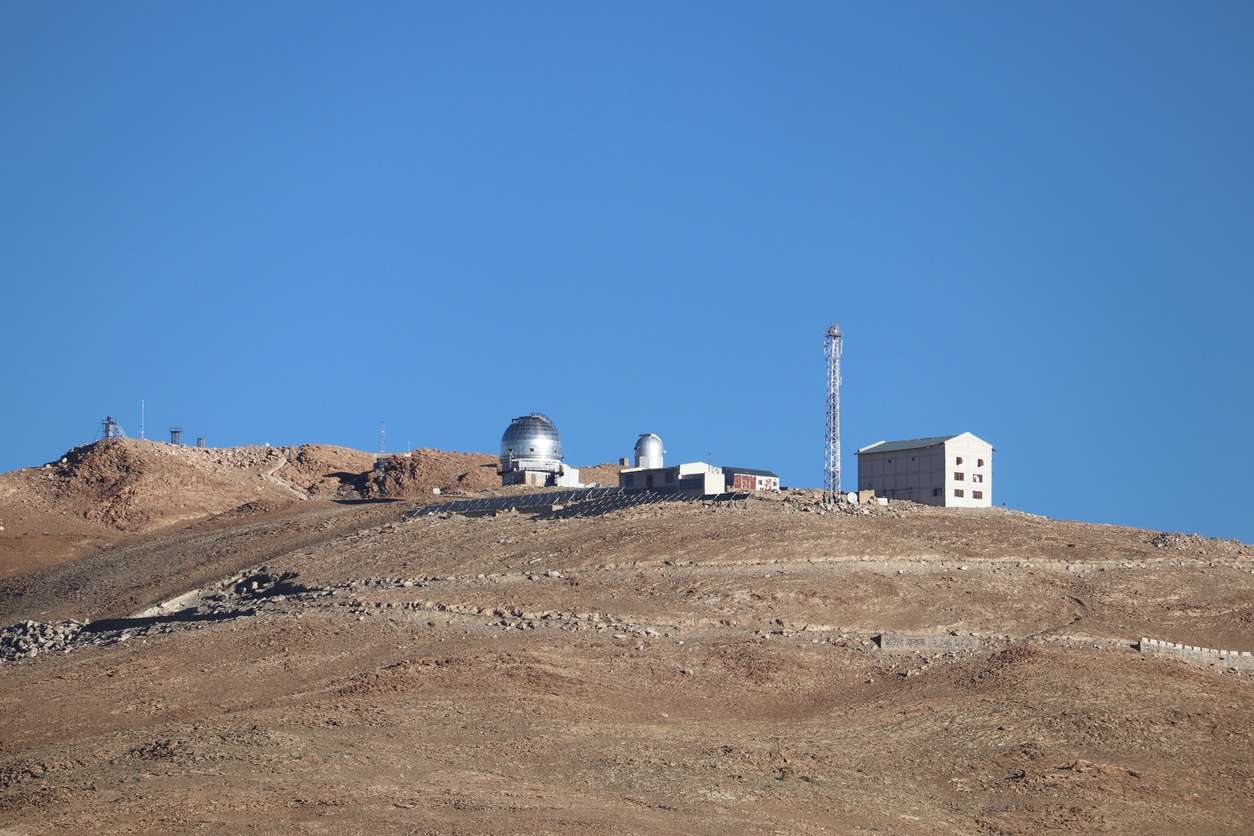
Indian Astronomical Observatory (India)
The Indian Astronomical Observatory (IAO) is a high altitude astronomy station located at Hanle, near Leh in Ladakh. It is operated by the Indian Institute of Astrophysics and is located at 4500 meters above sea level in the western Himalayas. The IAO is one of the world’s highest sites for optical, infrared and gamma-ray telescopes. The IAO has a 2-meter optical-infrared telescope called the Himalayan Chandra Telescope (HCT), which is operated remotely from Bangalore via a dedicated satellite link.
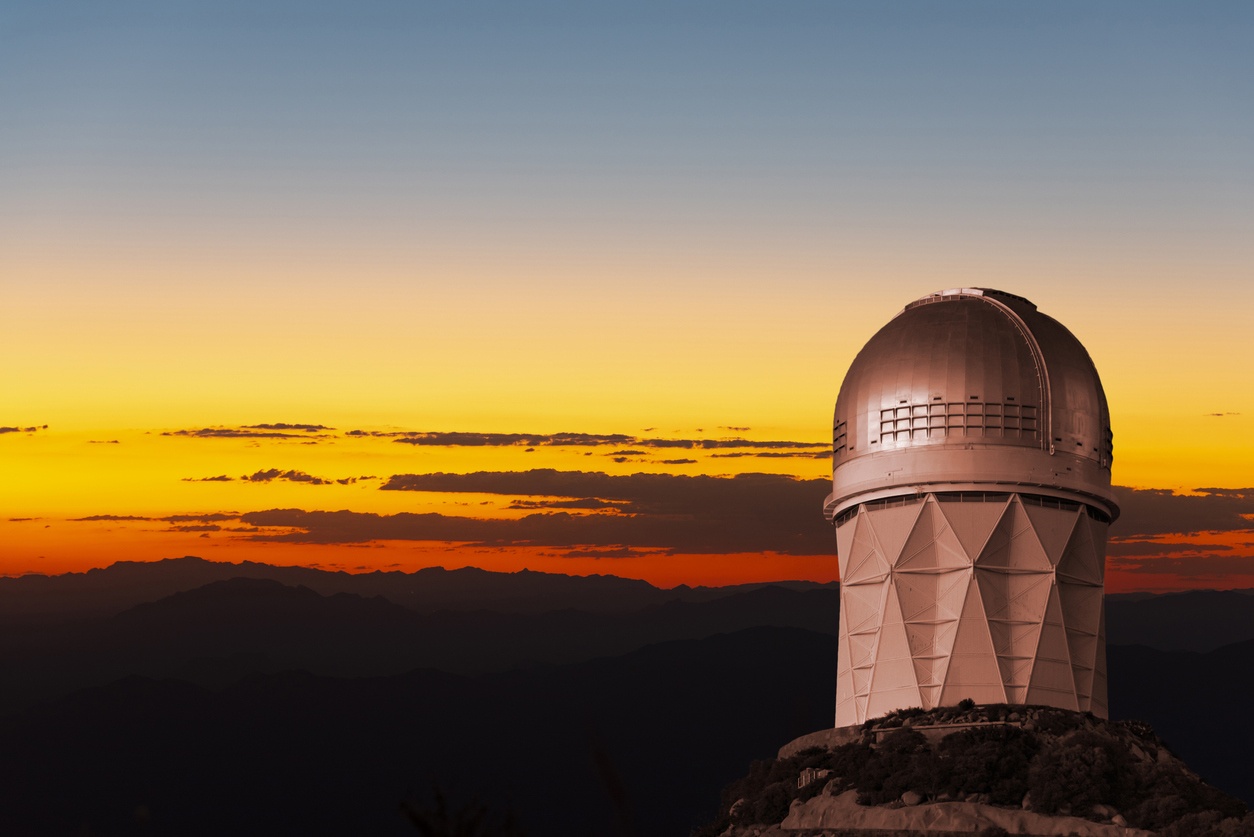
Kitt Peak National Observatory (United States)
Kitt Peak National Observatory is an astronomical observatory located in Arizona, about 70 km southwest of Tucson, at an elevation of about 2065 meters. The observatory began operating in 1960 and is managed by the Association of Universities for Astronomical Research. The observatory has 23 telescopes, including the 4-meter Mayall telescope, the 3.5-meter WIYN telescope and the 1.6-meter McMath-Pierce solar telescope.
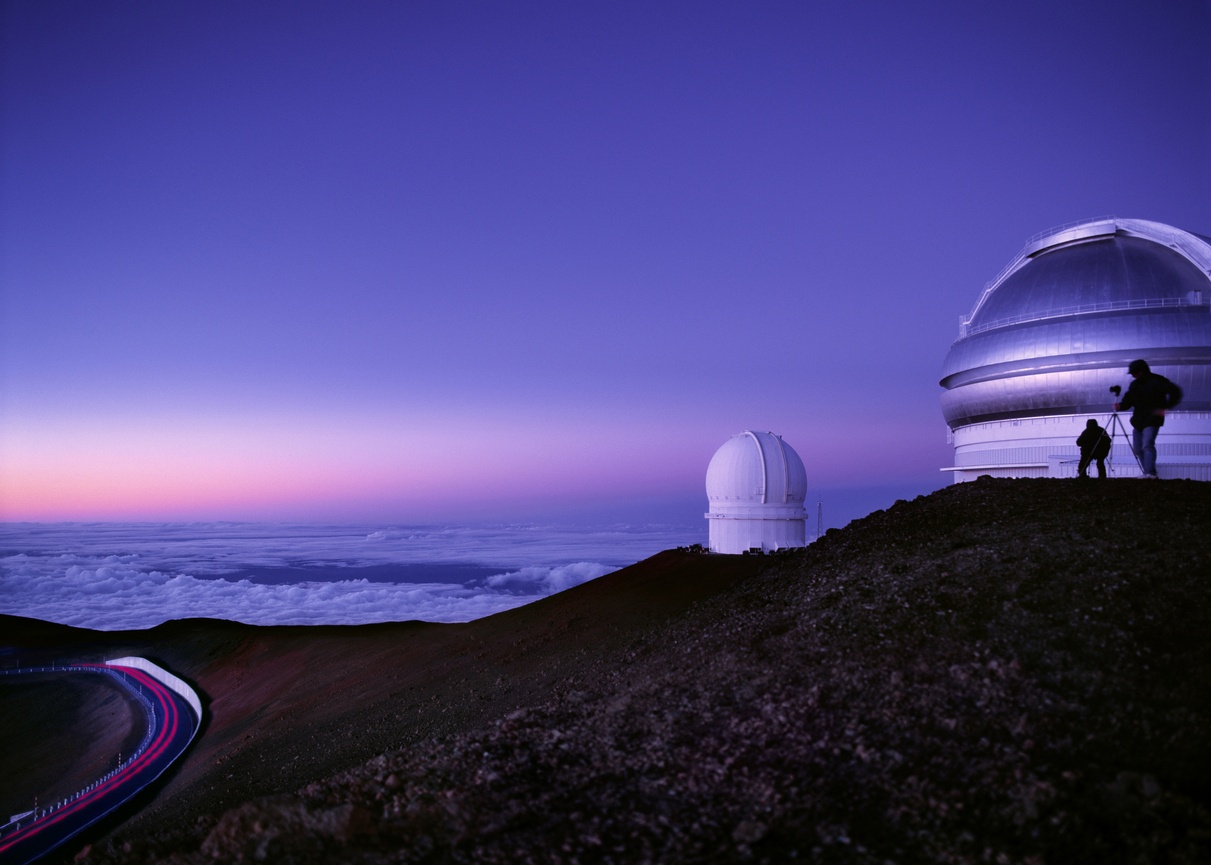
Mauna Kea Observatories (United States)
The Mauna Kea Observatories are a set of astronomical facilities located at the top of the Mauna Kea volcano on the island of Hawaii. It is one of the best places in the world for observing the night sky, due to its altitude of 4205 meters, its dark sky and low humidity. The observatories house some of the largest and most powerful telescopes in the world, such as Keck, Gemini North and Subaru.
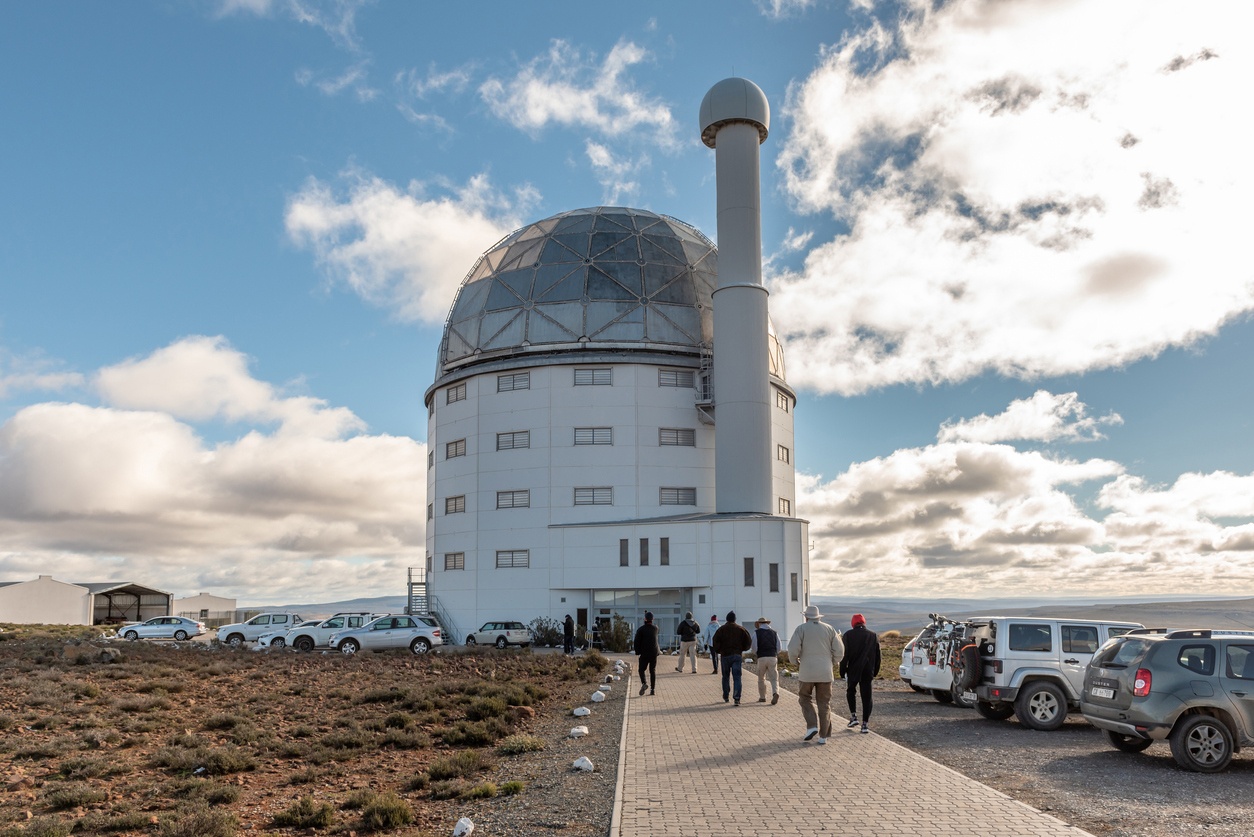
South African Astronomical Observatory (South Africa)
The South African Astronomical Observatory (SAAO) is the national center for optical and infrared astronomy in South Africa and was established in 1972. The observatory is operated by the South African National Research Foundation. The function of the observatory is to conduct research in astronomy and astrophysics. The main telescopes are located at Sutherland, 370 kilometers from Cape Town, where the headquarters are located. The SAAO has links around the world for scientific and technological collaboration.
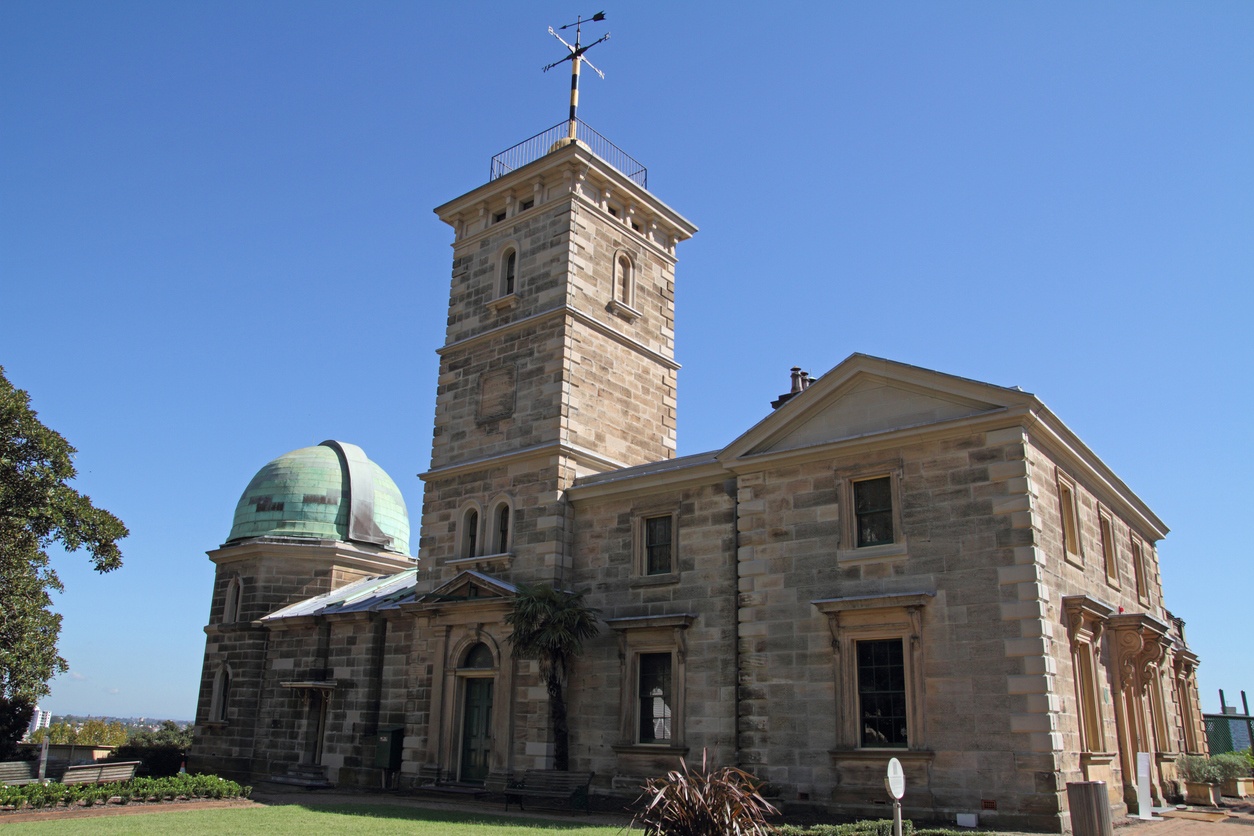
Sydney Observatory (Australia)
The Sydney Observatory is an interactive museum located on a hill in central Sydney. It was built in 1858 as an astronomical observatory and signal station. The observatory has two historic telescopes: a 29 cm refractor telescope from 1874 and a 40 cm diameter Schmidt-Cassegrain telescope. Visitors can observe the night sky and learn about astronomy and the history of the site.
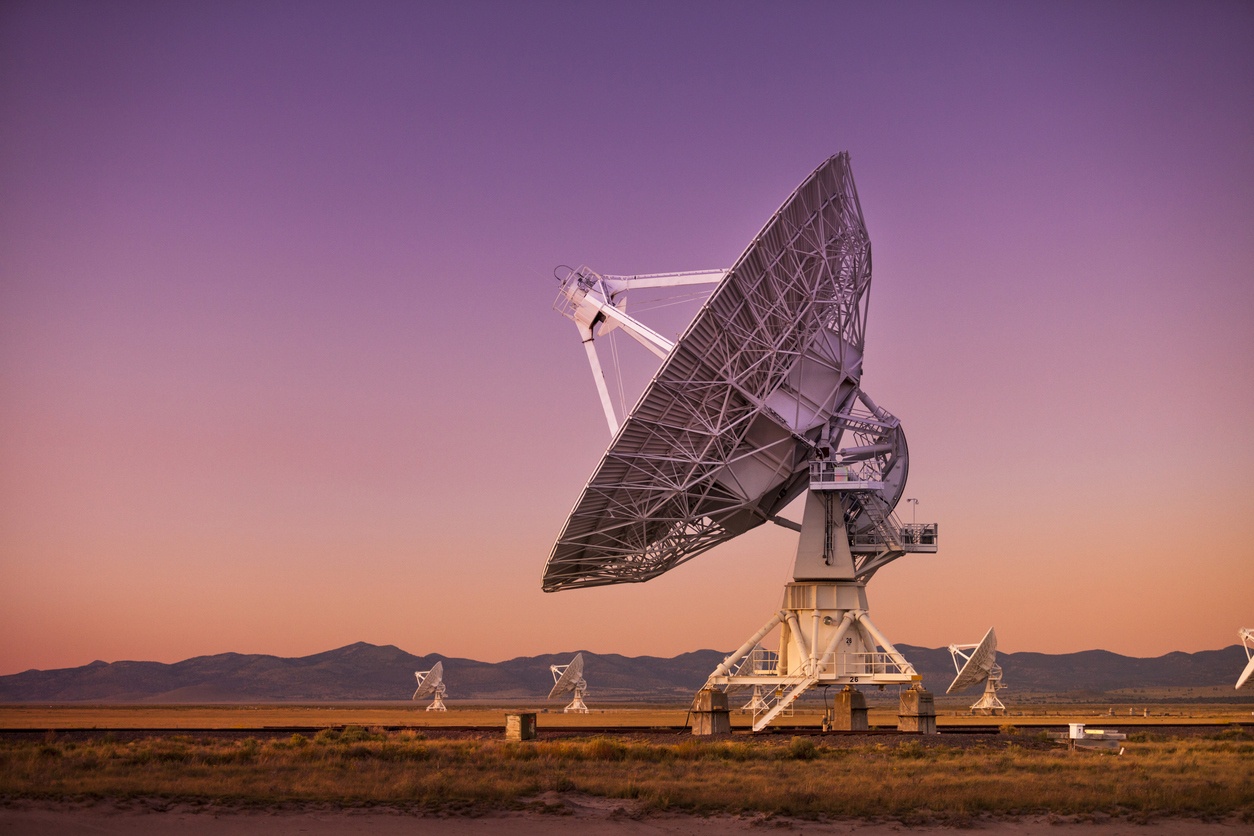
Karl G. Jansky Very Large Array (United States)
The Karl G. Jansky Very Large Array (VLA) is a radio astronomical observatory located in New Mexico, USA. It consists of 27 parabolic antennas, each 25 meters in diameter, distributed in a Y-shape over an area of 36 km. The antennas can be moved along railroad tracks to change the configuration of the observatory. The VLA can observe the sky at wavelengths from 0.6 cm to 410 cm. The observatory is used to study phenomena such as black holes, galaxies, stars and planets. The VLA is named after Karl G. Jansky, the pioneer of radio astronomy.
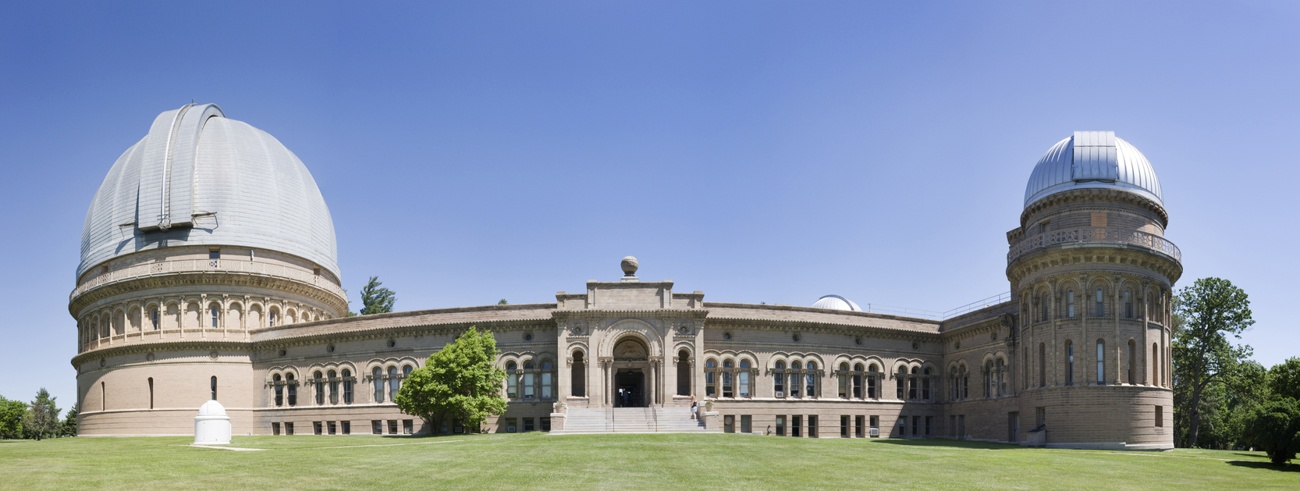
Yerkes Observatory (United States)
The Yerkes Observatory is an astronomical observatory located in Williams Bay, Wisconsin. It is owned by the University of Chicago and was funded by tycoon Charles Tyson Yerkes. The observatory houses the world’s largest refracting telescope, with a 101 cm diameter lens, built by Alvan Clark & Sons in 1897. It also has a 12-inch telescope that was the first used by George Ellery Hale, the observatory’s founder. The observatory is used to study the Sun, stars and galaxies. The observatory building has a neo-Romanesque style and is surrounded by gardens designed by the Olmsted firm.






